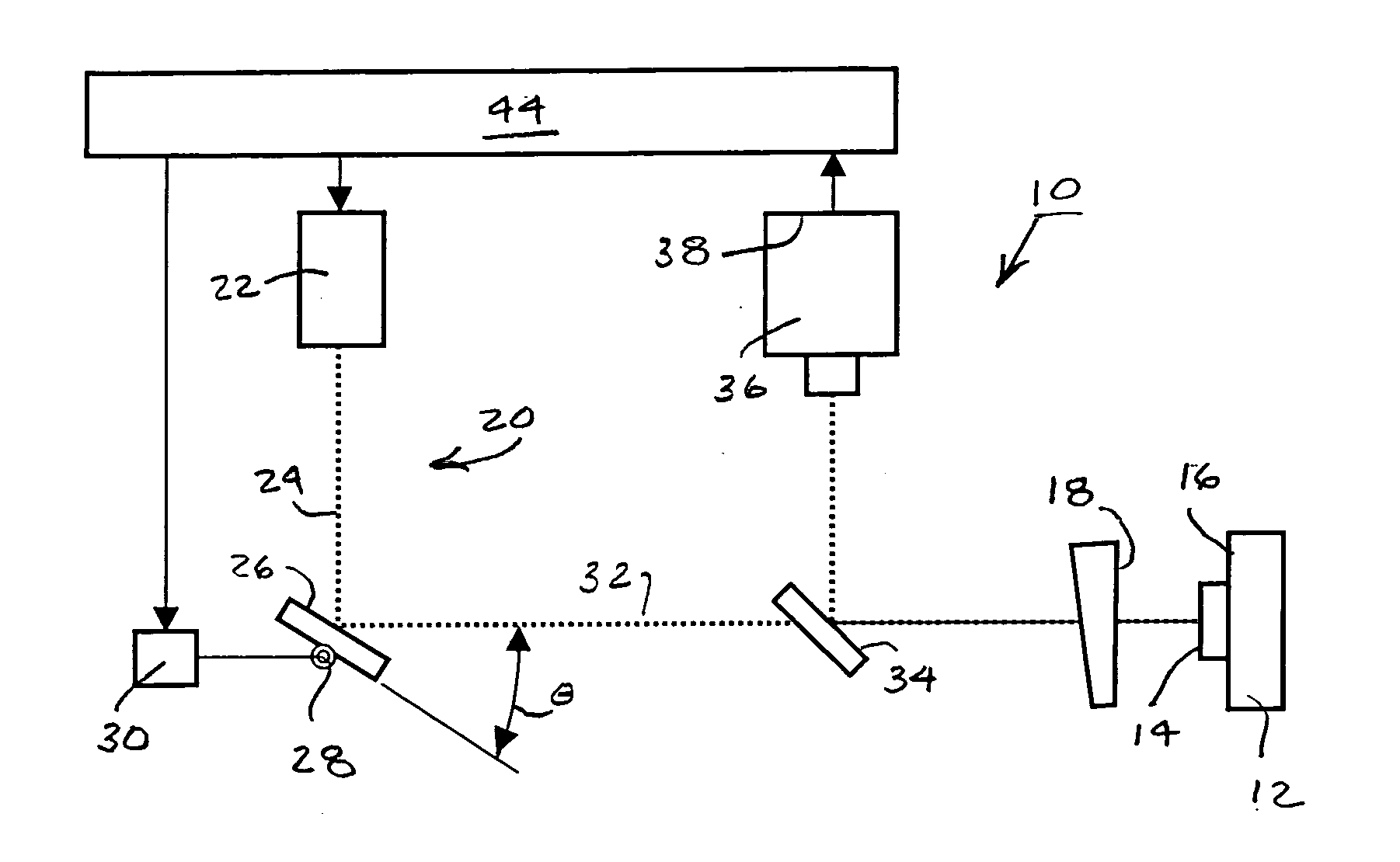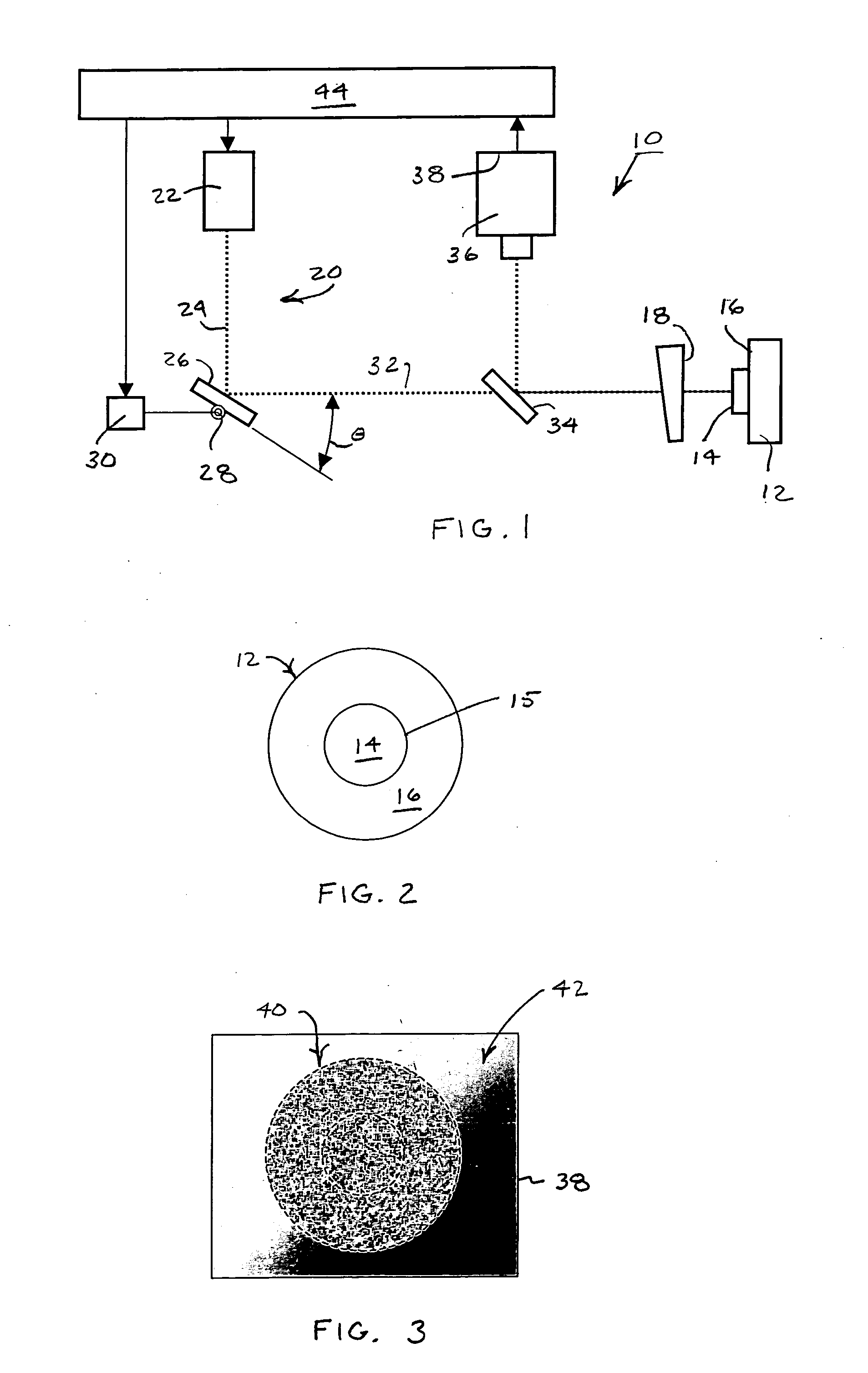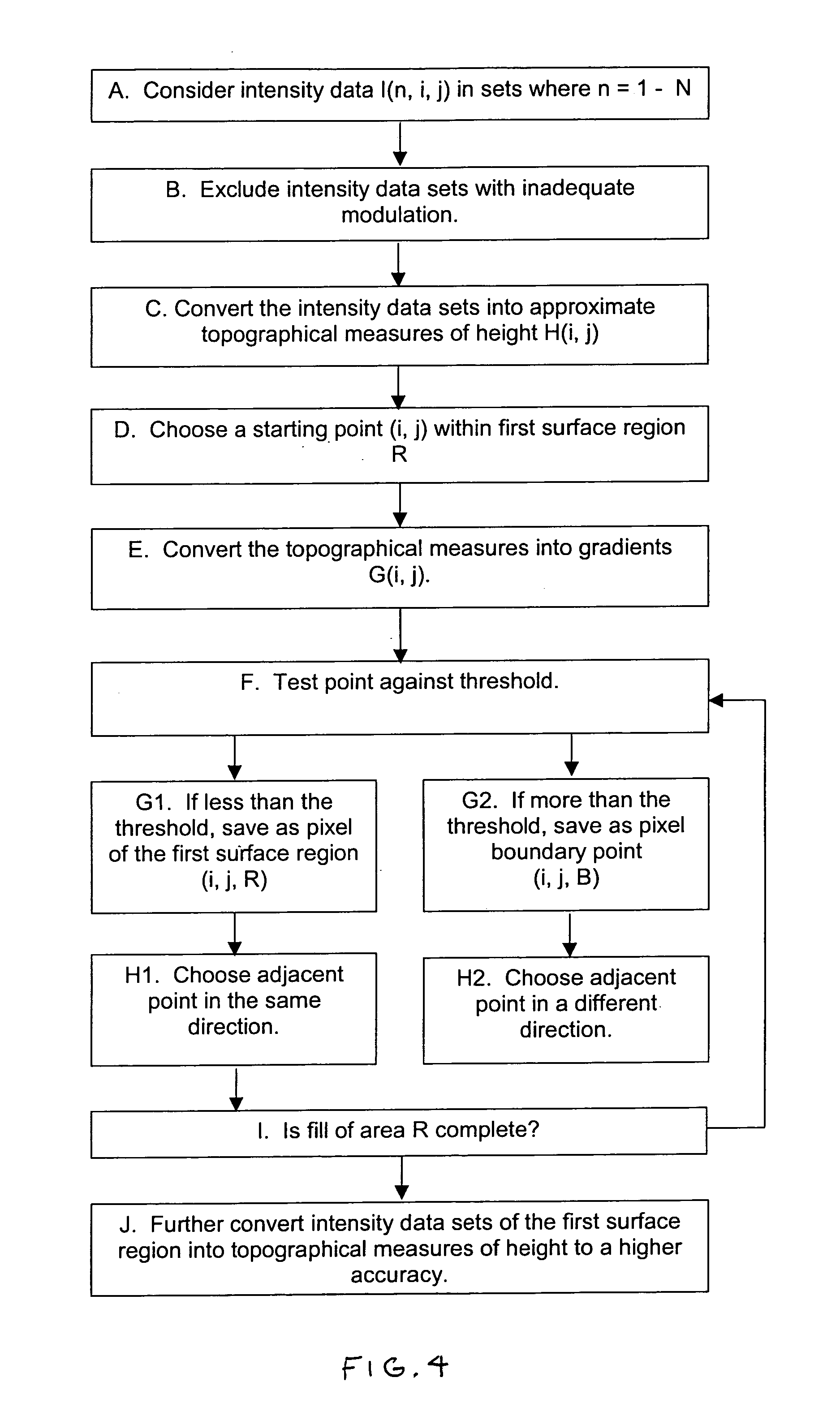Feature isolation for frequency-shifting interferometry
a technology of frequency-shifting interferometer and feature isolation, which is applied in the direction of measuring devices, instruments, optical means, etc., can solve the problems of insufficient additional processing time for achieving increased accuracy, so as to improve measuring speed or efficiency, and preserve processing time of frequency-shifting interferometers
- Summary
- Abstract
- Description
- Claims
- Application Information
AI Technical Summary
Benefits of technology
Problems solved by technology
Method used
Image
Examples
Embodiment Construction
[0031] A frequency-scanning interferometer 10 is shown in FIG. 1 in a common path (e.g., Fizeau) configuration for measuring a test object 12 having first and second surface regions 14 and 16 as also shown in FIG. 2. Height variations among points on one or both of the first and second test surface regions 14 or 16 are measured in comparison to a reference surface 18 by collecting and evaluating interference data for each of the points at a plurality of measuring beam frequencies. The second surface region 18 surrounds the first surface region 16, and a boundary 15 separates the two surface regions 14 and 16. In this example, the first surface region 14 is subject to more stringent measuring criteria, such as a more limited tolerance for height variation, than the second surface region 16 and requires measurement to higher accuracy.
[0032] A preferred coherent light source for the interferometer 10 is a mode-selective frequency-tunable laser 20, which includes a lasing cavity 22 and...
PUM
 Login to View More
Login to View More Abstract
Description
Claims
Application Information
 Login to View More
Login to View More - R&D
- Intellectual Property
- Life Sciences
- Materials
- Tech Scout
- Unparalleled Data Quality
- Higher Quality Content
- 60% Fewer Hallucinations
Browse by: Latest US Patents, China's latest patents, Technical Efficacy Thesaurus, Application Domain, Technology Topic, Popular Technical Reports.
© 2025 PatSnap. All rights reserved.Legal|Privacy policy|Modern Slavery Act Transparency Statement|Sitemap|About US| Contact US: help@patsnap.com



